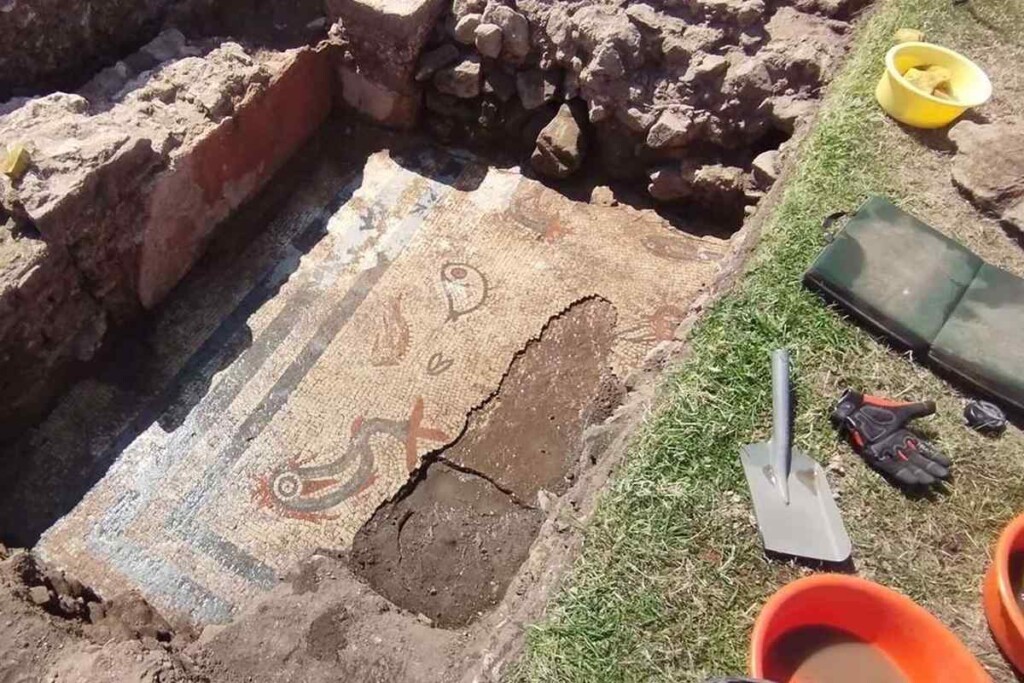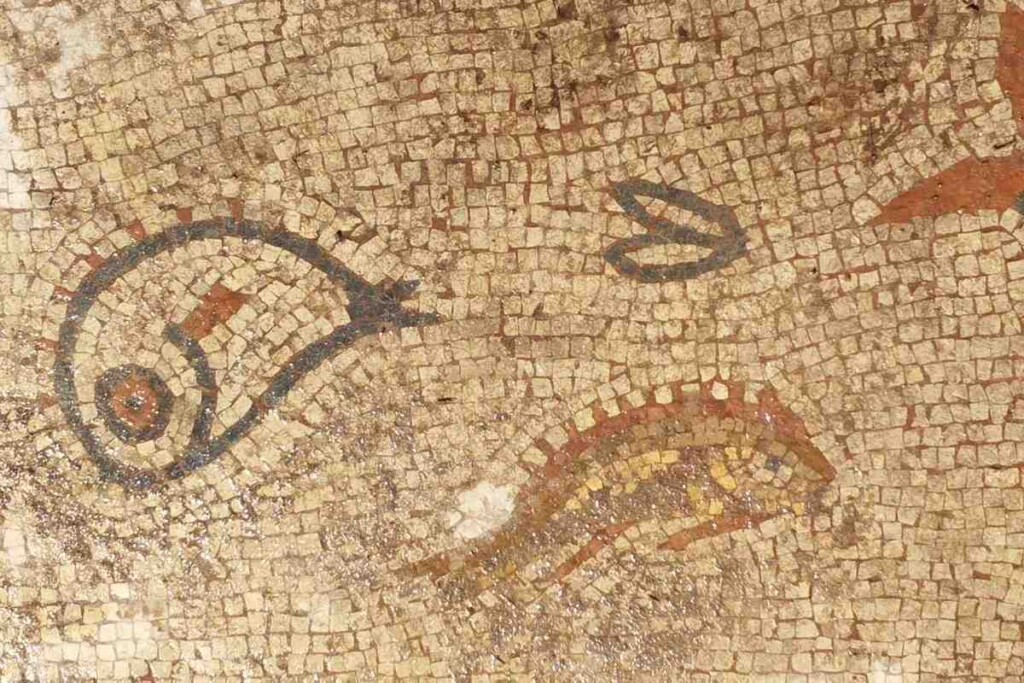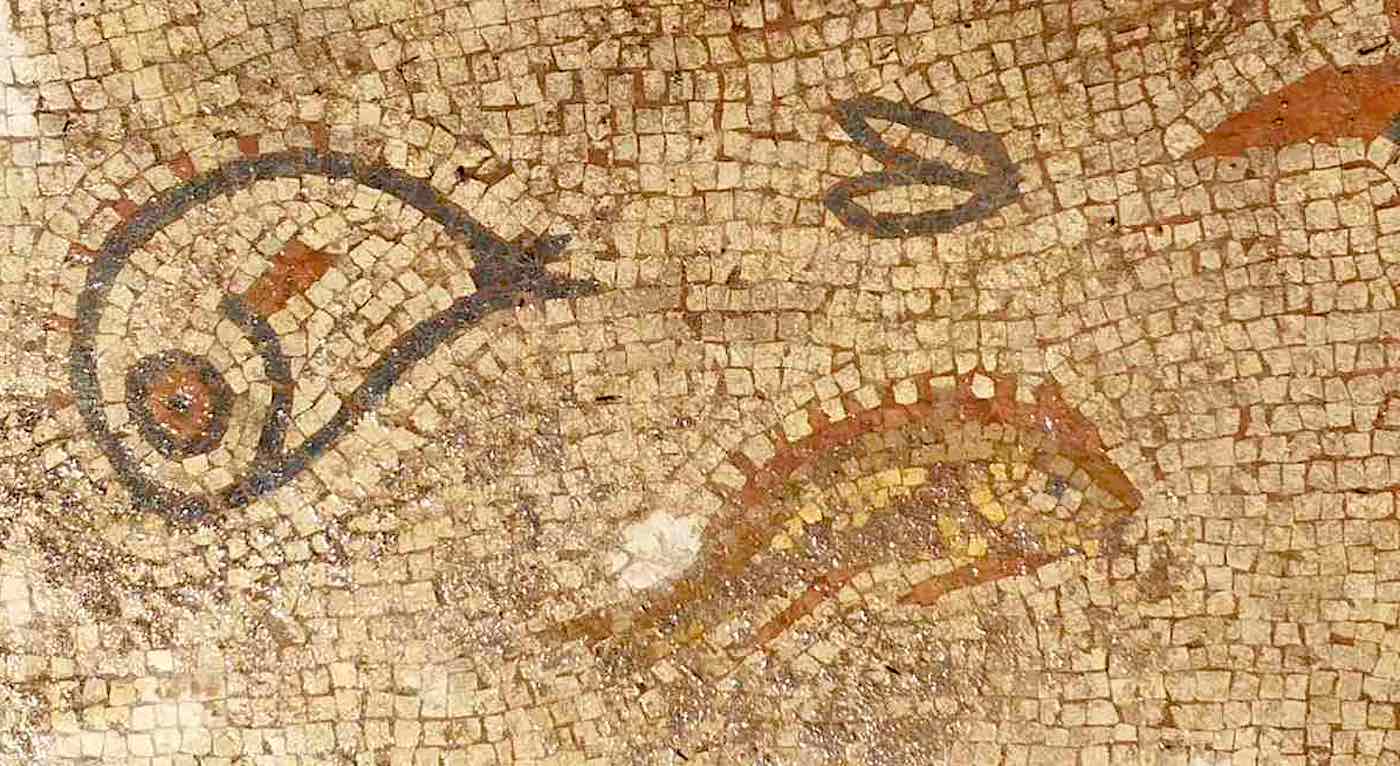
A remarkable 2,000-year-old Roman mosaic was uncovered during excavations at Wroxeter Roman city, which also uncovered an ancient building and shrine.
The Roman presence in Britain is often referred to as the high water mark of the Roman Empire, while the decline and eventual abandonment as something like the receding of a tide.
As the tides of empire receded from England’s Shropshire, near Wales, they left behind a stunning mosaic of fish and other sea life made from green, blue, yellow, and red tiles that’s just been seen for the first time in centuries.
Recent excavations on the largely unexcavated Roman city of Wroxeter turned up the foundations of the settlement’s main building.
“One of the best-preserved examples of a Roman city in Britain, Wroxeter (or Viriconium as it was known) established in the 90s AD, was a thriving city of the Roman Empire, once as large as Pompeii,” a statement from English Heritage reads.
“At its height, the city would have contained over two hundred houses, a civic bath house, marketplace, county hall and judicial center.”
The trenches were dug near the city’s forum, in search of a building called the Civic Temple. Located along the main road, the trenches yielded this “particularly rare” mosaic depicting sea life, and a painted plaster wall, the bottom of which, remarkably, survives to this day.

Also discovered was a mausoleum and shrine that may have housed the remains of an early civic leader such as a mayor.
Wroexeter contains the largest free-standing Roman wall remaining in Great Britain, and remnants of the public baths have also survived through the ages. The whole site, which saw 20 aspiring archaeologists join in the project, was reburied to protect it from oxidative damage and weathering.
MORE MUST-SEE MOSAICS: This 2,300-year-old Mosaic Made of Shells and Coral Has Just Been Found Buried Under Rome
AND: Stunning Ancient Roman Mosaic Found Submerged in the Sea off Naples
Fish and sea life were common motifs in mosaics made by the Romans and several of their contemporaries, for example, Carthage. The museum in Monastir, Tunisia, contains one of the most impressive collections of classical mosaics outside the Roman world, and sea life is depicted on many of them.
SHARE This Awesome Find From Roman Times With Your Friends…




















